For an eCommerce business, social sharing works as the free promotion: more shares bring more publicity and eventually more possibilities for purchases being made.
When it comes to China eCommerce, more shoppers entered an eCommerce site through links from social media platforms. Hence, you need a good social sharing button for your China eCommerce sites. A button can bring your products to Chinese mainstream social platforms within a few clicks.
[Related: Social share buttons for your eCommerce in China: Yay or Nay?]
After reviewing numerous social sharing buttons from China eCommerce sites, we decided to grade 20 of them and break them down one-by-one.
Social Sharing Button Grading Rules:
Our grades are based on the following rules:
-Usability
First and foremost, social sharing buttons should be easy to use. The purpose of social share buttons is to save the customer’s time and trouble from multiple copies and paste jobs. Therefore, any buttons are complicated to use, we do not think them as good ones.
-Main Social channels included.
An ideal social sharing button should let Chinese users share the contents to the social media platforms that they will most likely to use.
With that being said, the main channels must include WeChat, which is the No.1 social app in China now. Meanwhile, Weibo and QQ can also be important.
-User experiences.
We hope the button can offer positive user experiences overall. The button is a small but important part of the whole product page, so it cannot be either poor-designed or overwhelming.
So an ideal social sharing button is: with only one or two clicks, the user can share the product from desktop to his or her social media with full contents.
Why Desktop Only?
We only looked into social sharing from the desktop because mobile sharing is easy, so easy that social sharing button is not really that necessary.
Break it down into scenarios. If you are browsing eCommerce via browser, mostly you will just copy the link and paste it into your WeChat/Weibo/QQ conversations.
If you are browsing a WeChat store – even better. WeChat has built-in browsers and WeChat is social sharing friendly. The three steps are:
- Simply click the 3 dots on the upper right;
- WeChat will allow you to share it with your contacts, or to your WeChat Moments. Choose whichever you want;
- Choose your contacts you want to share with, and job was done.
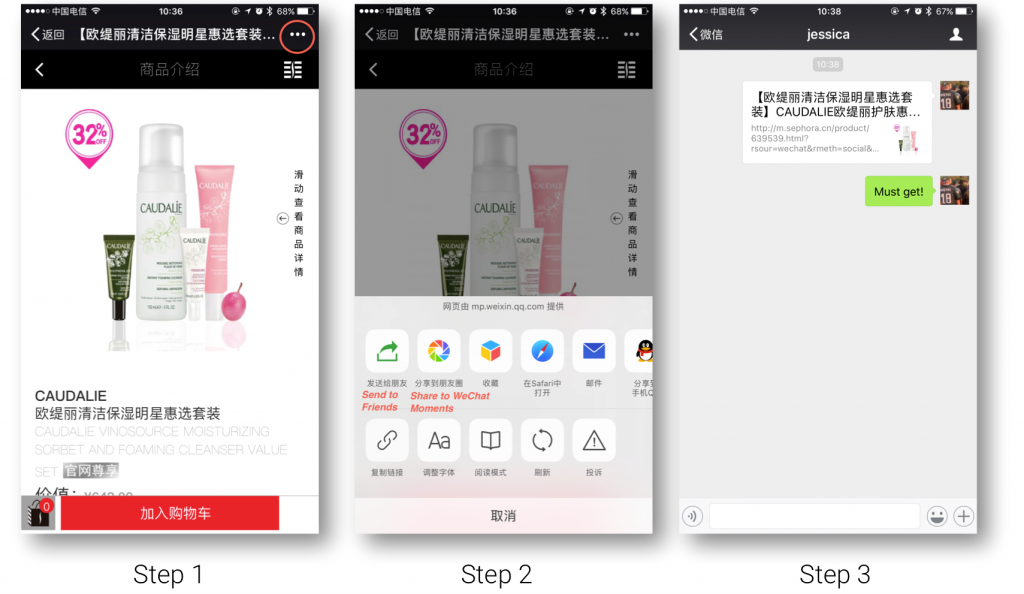
Grade the Social Sharing Buttons in China eCommerce
Without further ado, here are the 20 social sharing buttons from China eCommerce sites, graded:
20. Kaola.com: F
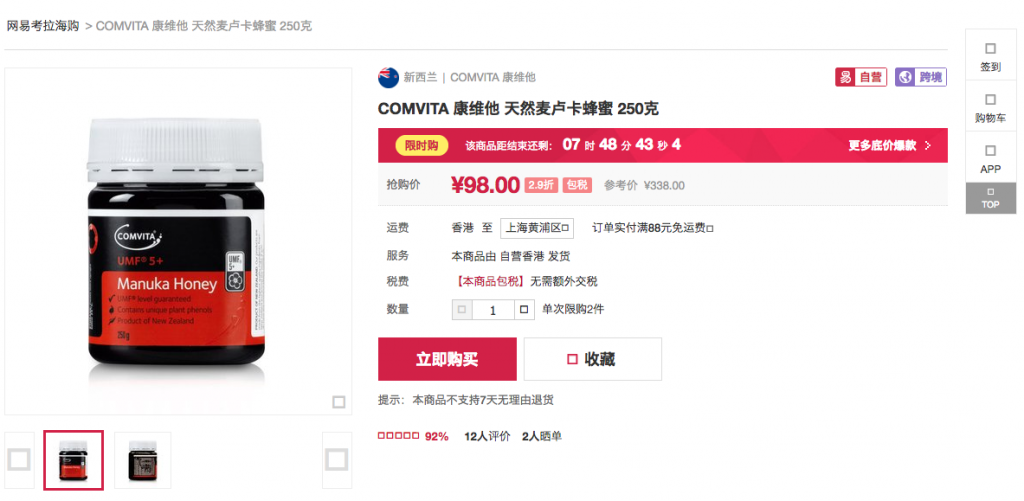


19. YHD.com: F
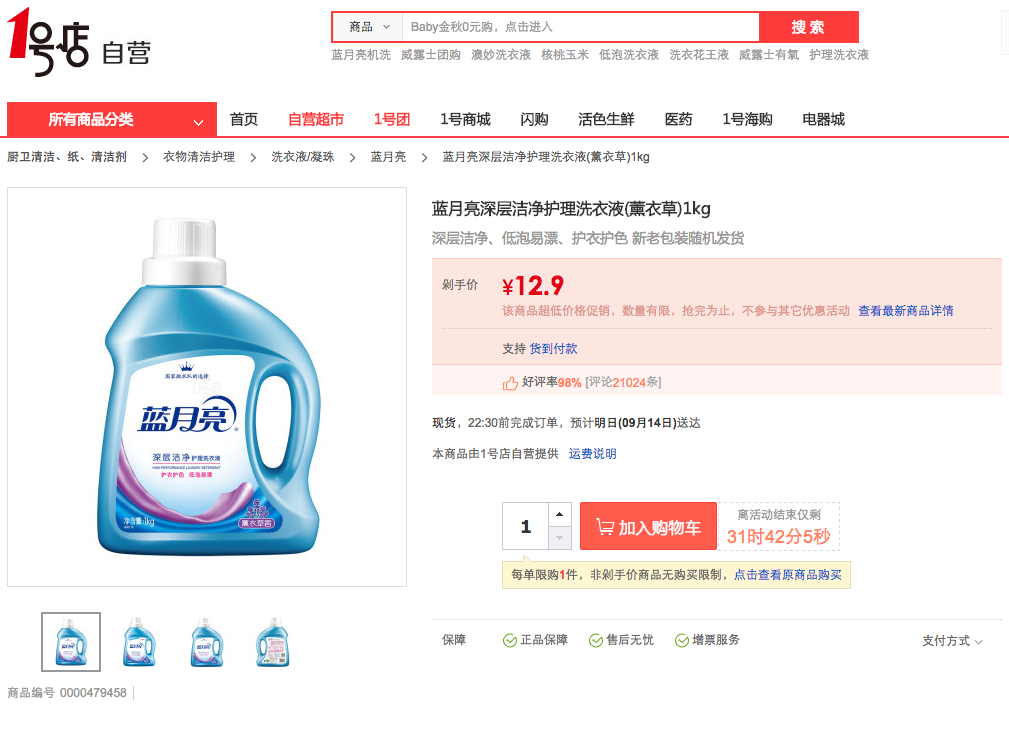


Nothing. Absolutely nothing. There should be something, but there is nothing. Both Kaola and YHD are doing good in China B2C eCommerce, so not paying any attention to social sharing can be harmful for them in the long run.
18. JD.com: D-
17. Tmall.com:D-
Being two eCommerce giants in China, social sharing buttons can be JD and Tmall’s achilles heel. Here are the reasons they got Ds:
For starters, both of their social sharing buttons are hiding on bottom left, with small fonts that can be easily ignored.
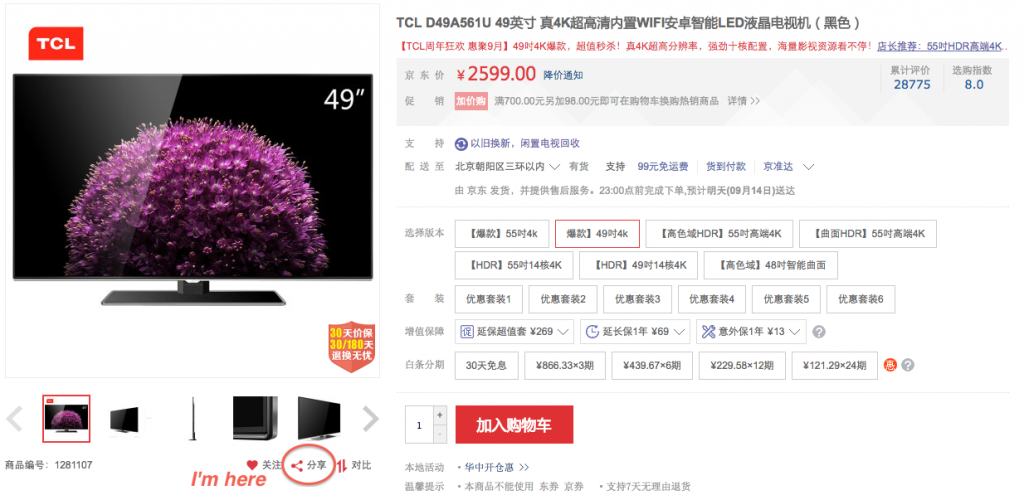


JD
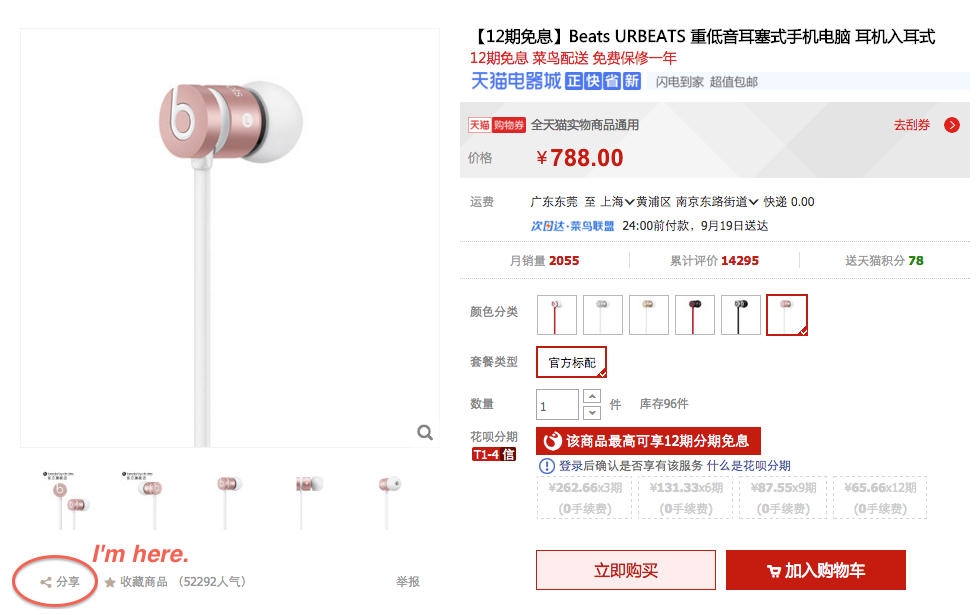


Tmall
The nightmare won’t start until we click on that.
For JD, it requires user to log in before sharing! Guess how many users will exit your site when they see this login form:
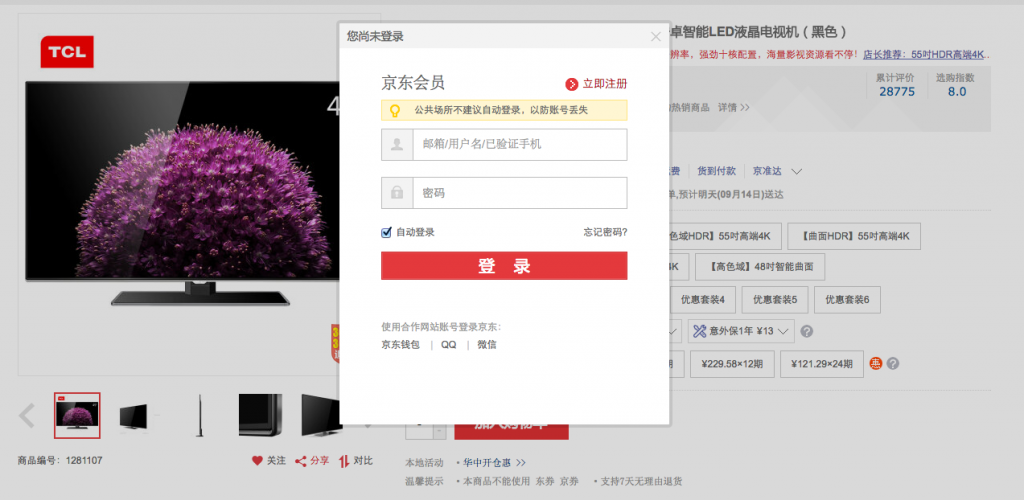


Let’s say I want to share this so bad that I actually log in. Does that make everything better? Not really…
Seen from this image below, JD allows you to share to these 5 platforms:
-Weibo,
-Tencent Weibo (out of business in 2014);
-Renren (almost out of business),
-Kaixin001 (out of business in 2016),
-Douban.
And…. No WeChat.
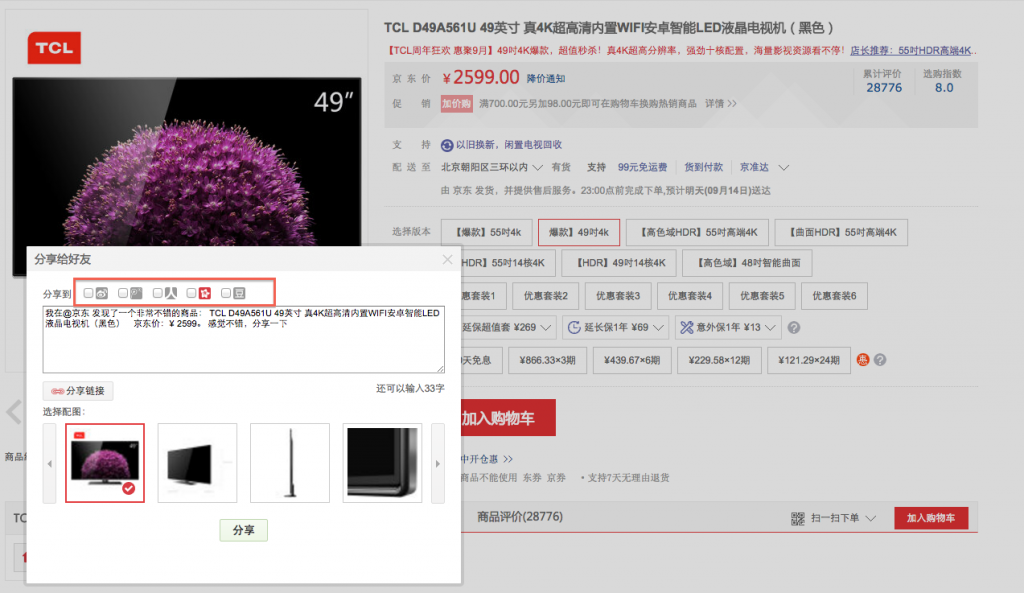


But let’s say I really really wanna share this on JD… so I clicked the “Share on Weibo” button.
It asked me to log in my weibo to enable sharing via JD.
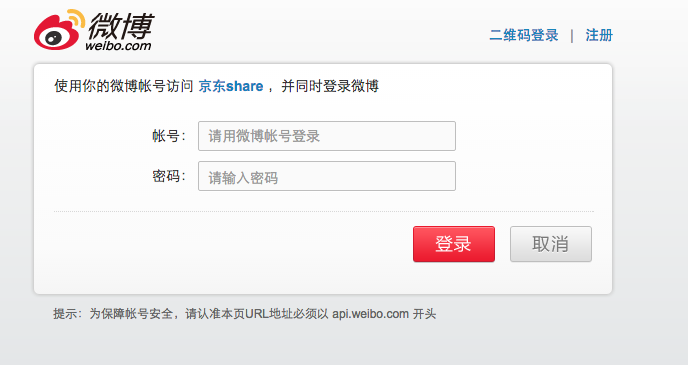


Another login…just great.
I’m out.
Meanwhile, Tmall isn’t any better. It requires login first as well, and it only allows me to share on Weibo.
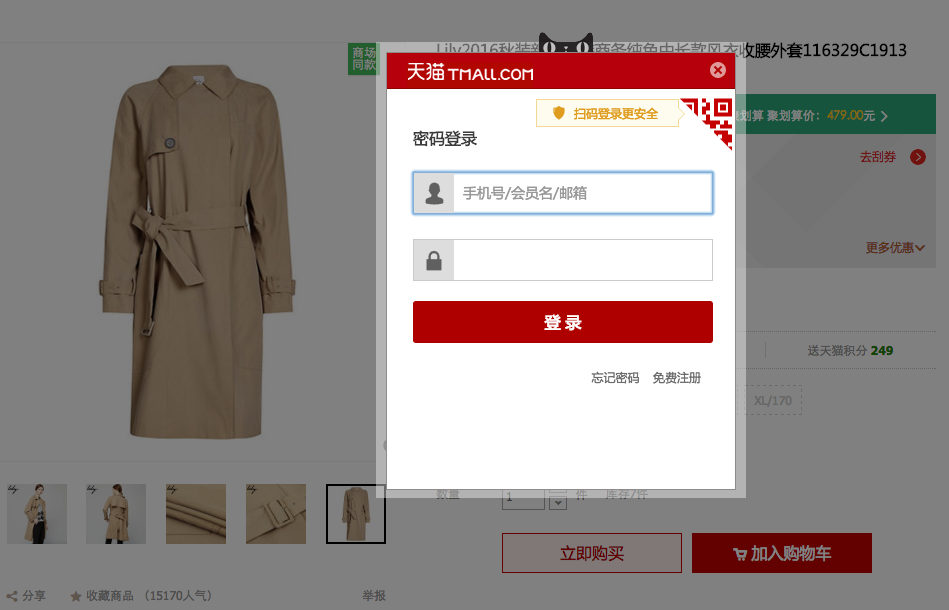


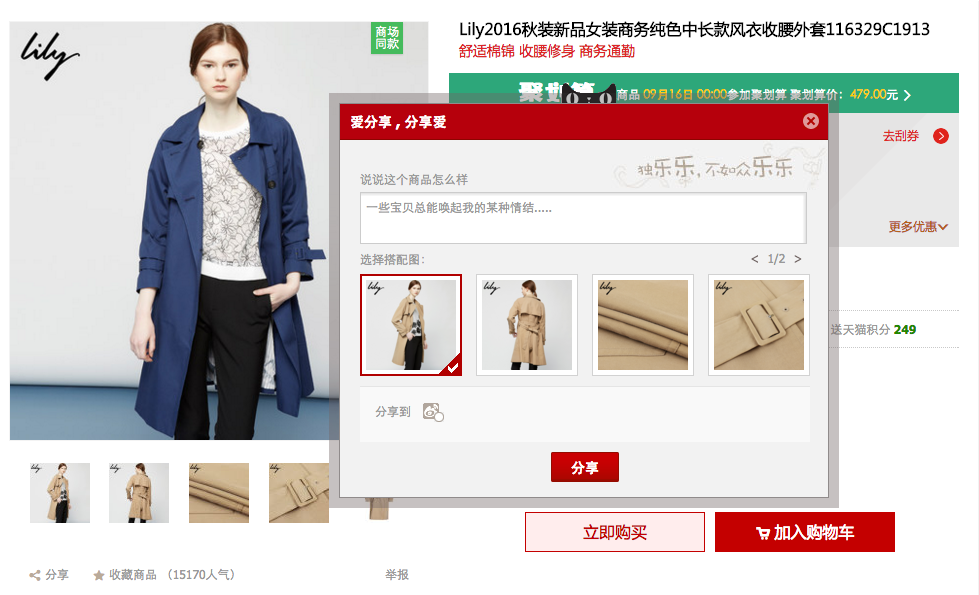


Frankly, Tmall and JD are China eCommerce pioneers in many different ways, so we are expecting more on them.
16. Yoho Buy: D
Yoho Buy is a quite popular eCommerce site specializing in young, fashion apparels. It has social sharing buttons (shown below), which seems OK, although some of the platforms are out of business as mentioned before.
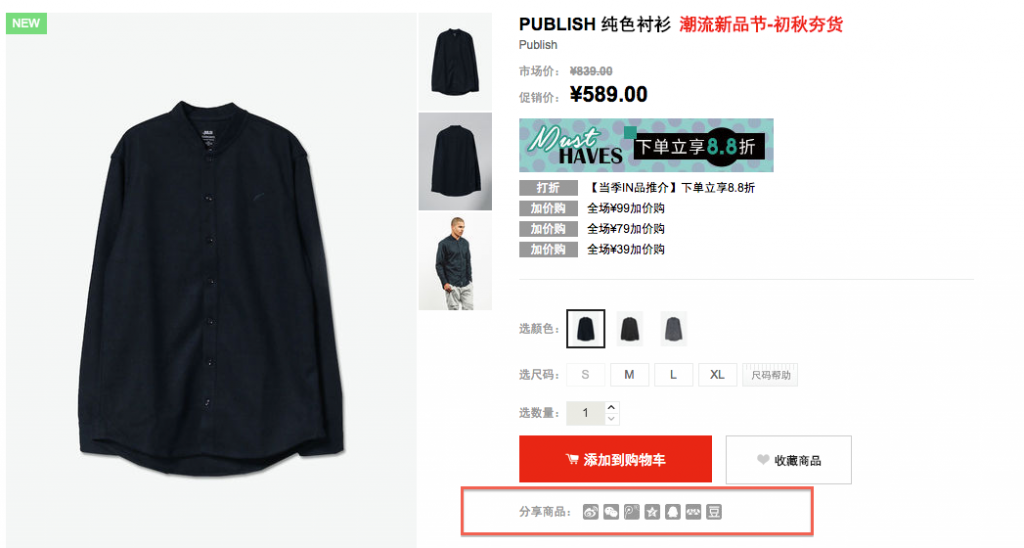


But when you actually tried it, you’ll understand why they got a D. For example, I clicked on “to share on WeChat”, and a QR code popped up.
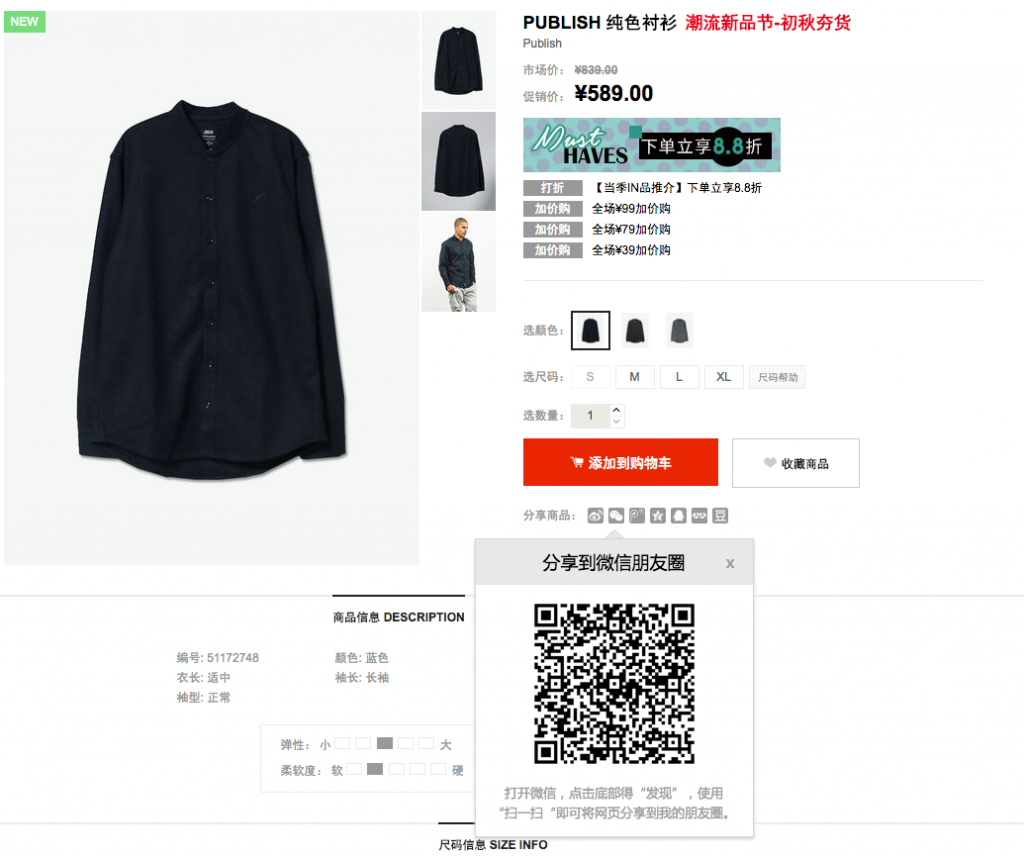


Scanned it, and …
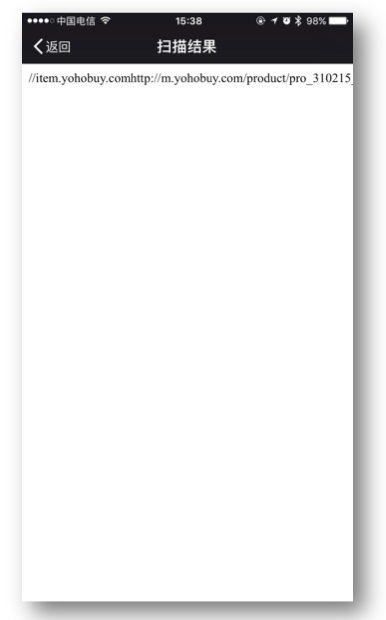


That is just a big fat turn-off, Yoho Buy.
Whether there is an error with generating the QR code dynamically, or the chemistry between your QR Code and WeChat scanner is wrong, you need to find out the problem before us.
15. Kede.com: D
Kede is another eCommerce who screwed up on QR codes.
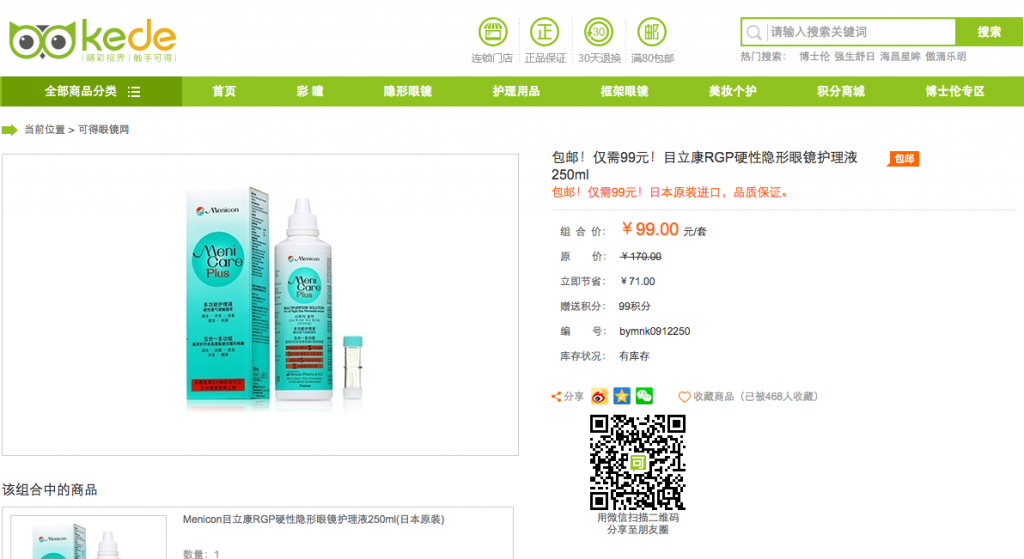


After scanning Kede’s “Share to WeChat” QR code, it did not jump to this particular item’s page, but to Kede’s WeChat Public account.
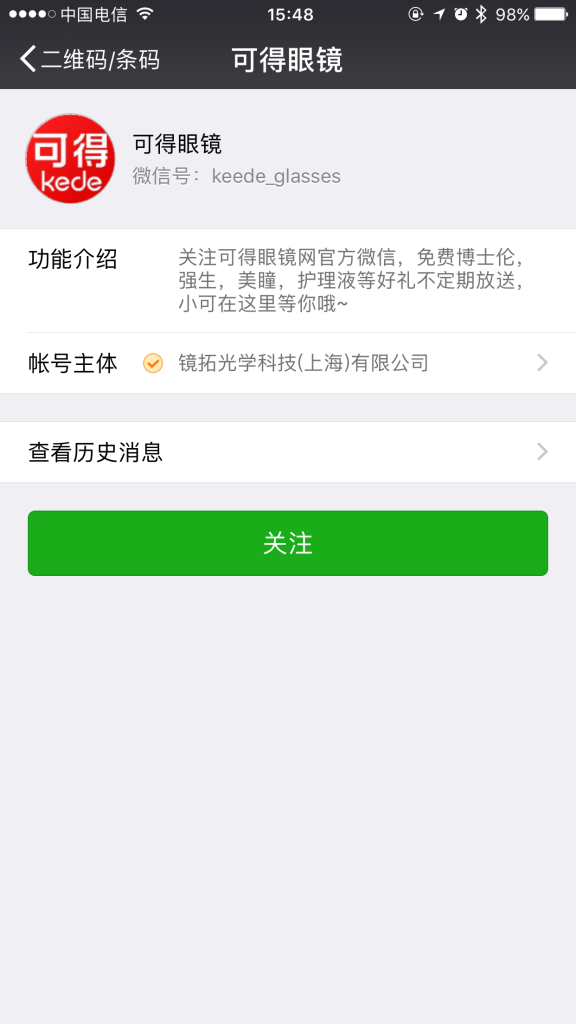


14. Yesmywine.com: D+
Talking about an overwhelmed social sharing button.
Yesmywine, the Alcohol B2C eCommerce provides users with as many as 15 channels to select. Of course, some of them are out of business already, some others are barely used, and all 15 together here is just disturbing.
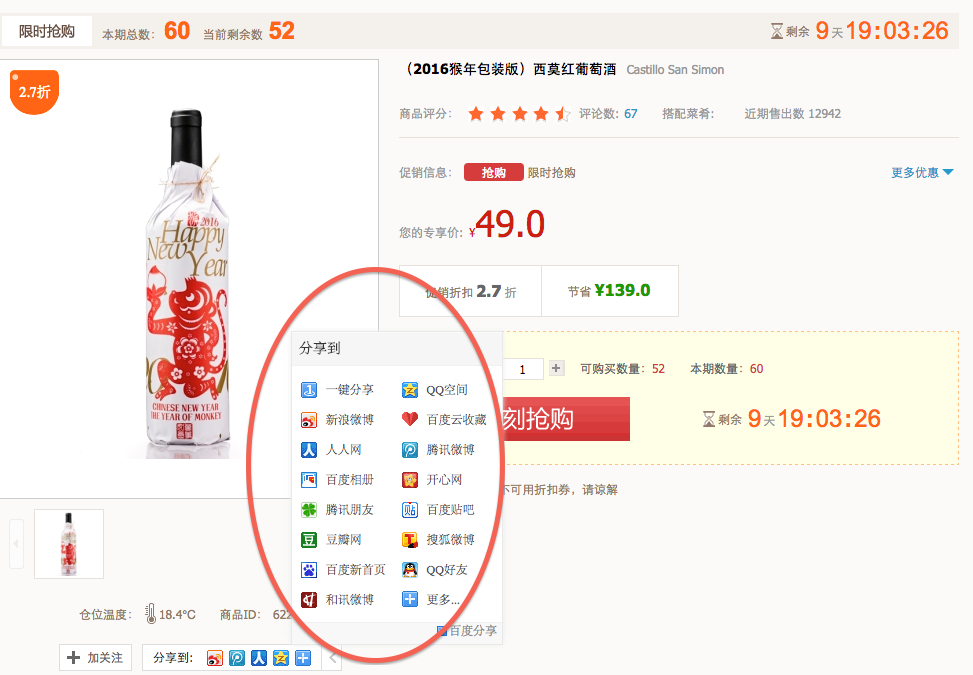


13. Youwu: D+
If 15 is already too many, how about 96 more?
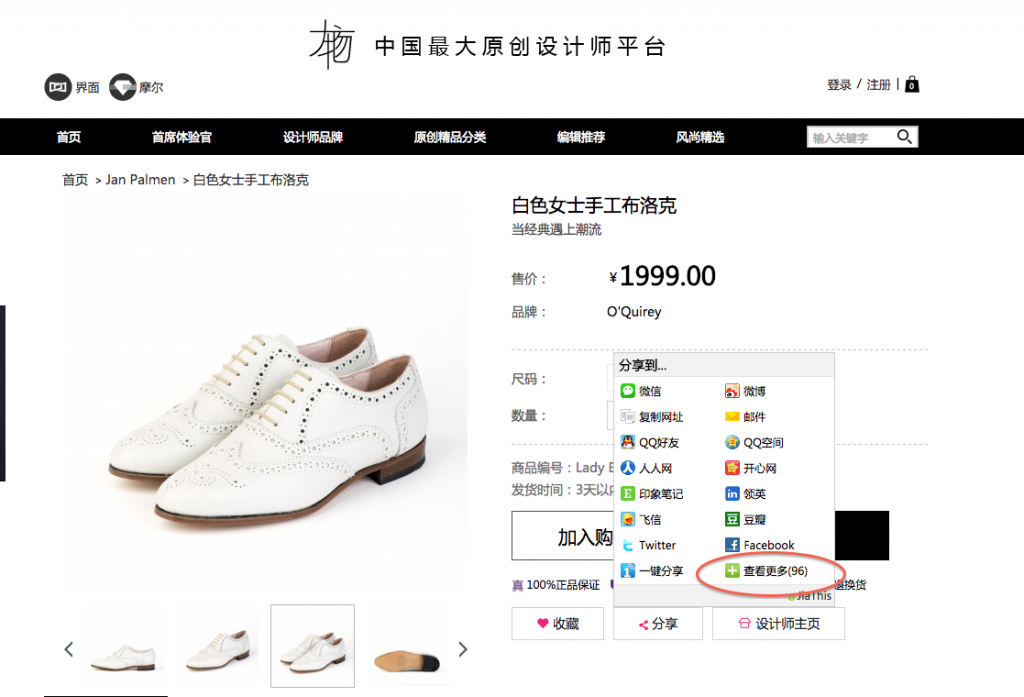


12. H&M CHINA: D
H&M’s social sharing button is just confusing.
To begin with, its sharing button is grey out, which usually means that the button is disabled.
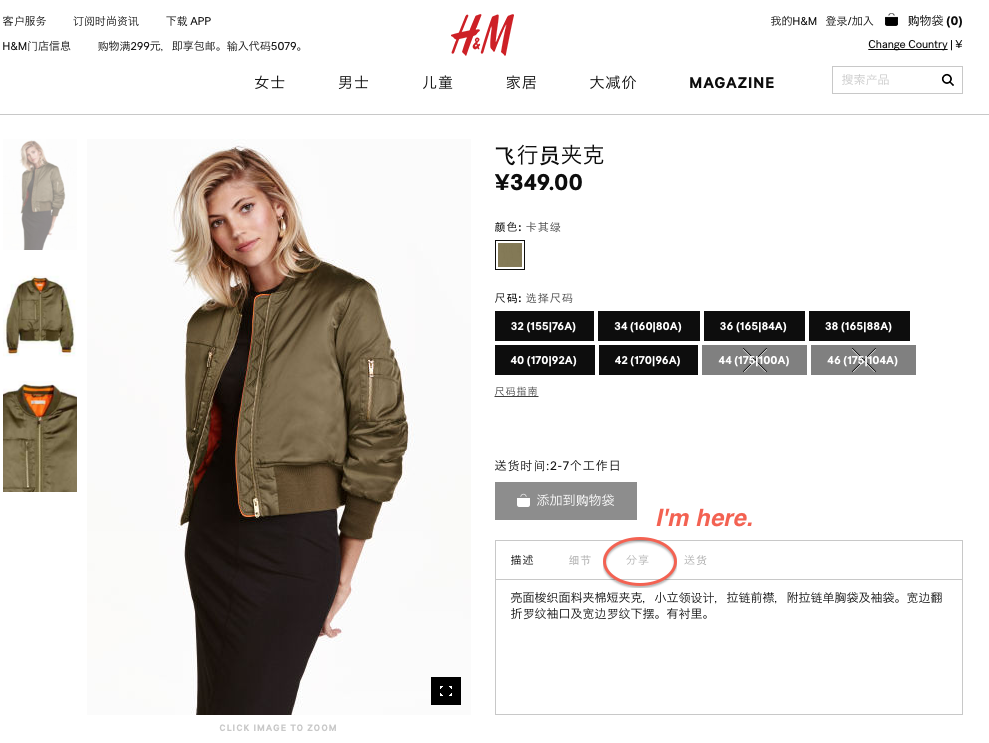


Then after we clicked on that, two social platform options appeared, with an awkward space in between. Weibo ( with counters), and Renren.
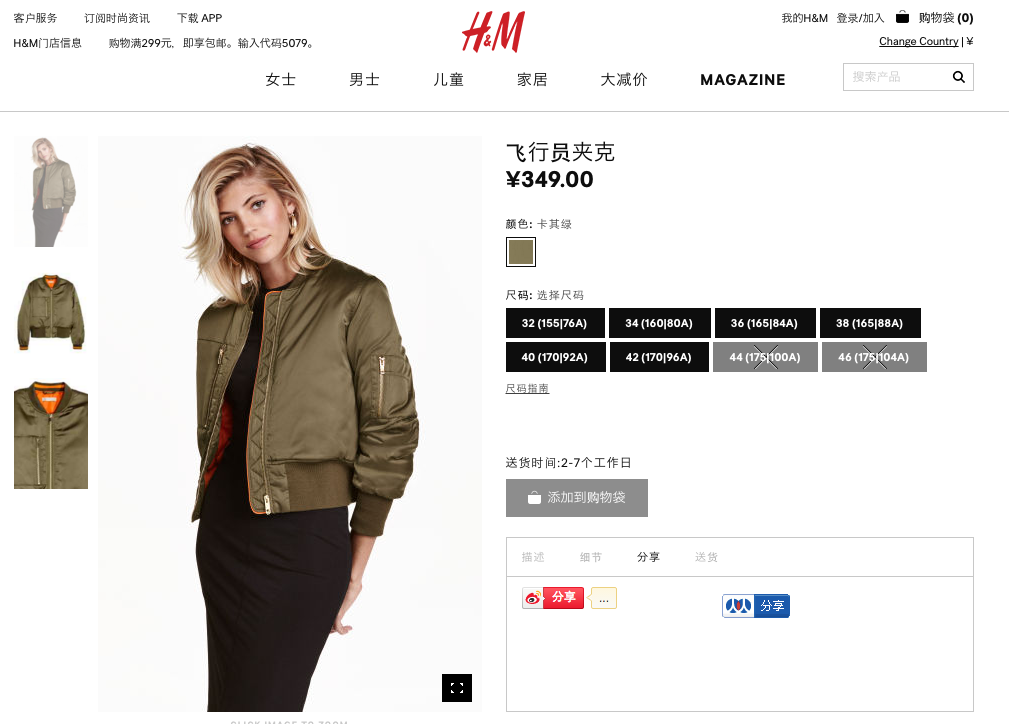


11. Nike CHINA: C
Nike is one of the most social brands in the world, but seems like they definitely need some extra work on social sharing buttons, at least in China.
Take a look at the good side: its button is simple, easy-to-find, fit in with the whole page design.
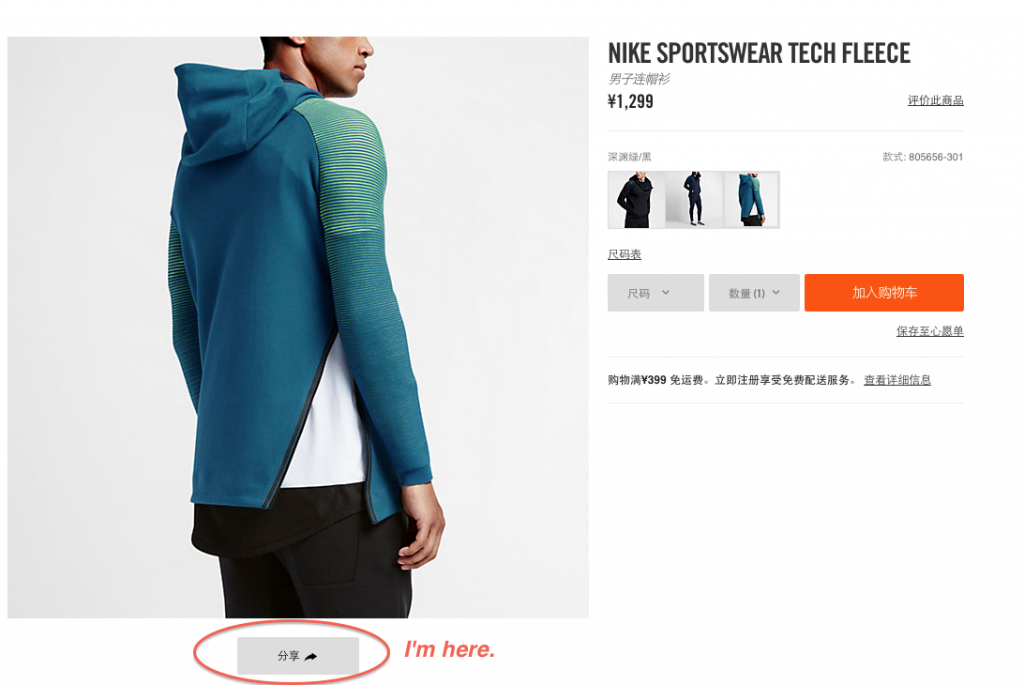


When you click on that, only two options are out there: Weibo and Tencent Weibo.
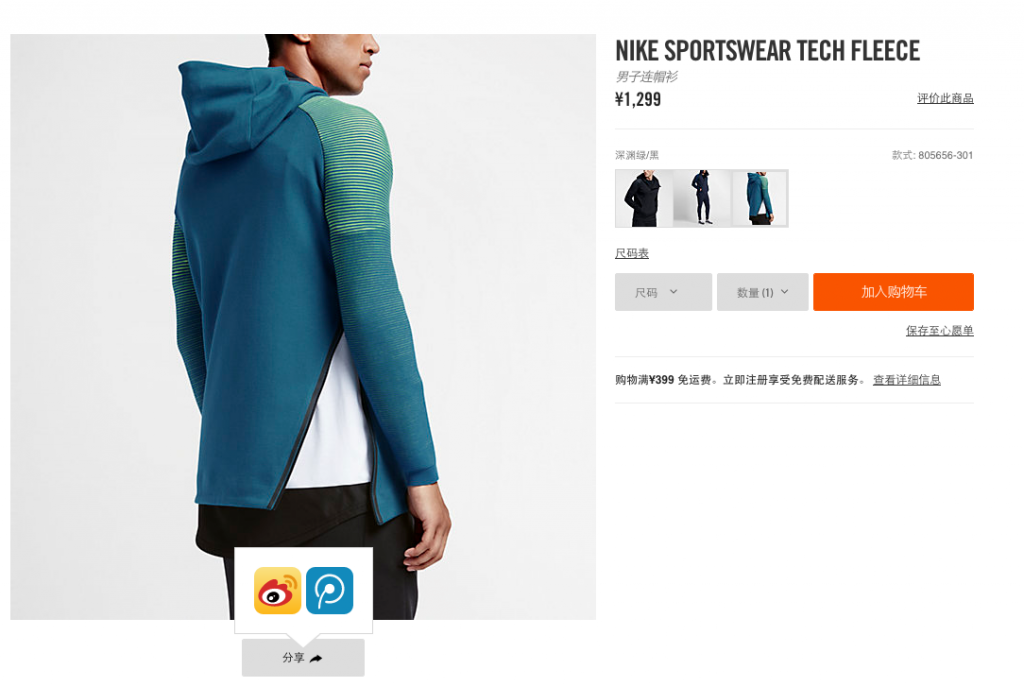


To replace Tecent Weibo with WeChat is Nike China’s priority now.
10. NewEgg.CN: C
Newegg is one of the biggest electronic online retailers from United States, and they may also need to think whether the social sharing channels they provided are all necessary.
Seen image below, it offer 8 channels, without WeChat.
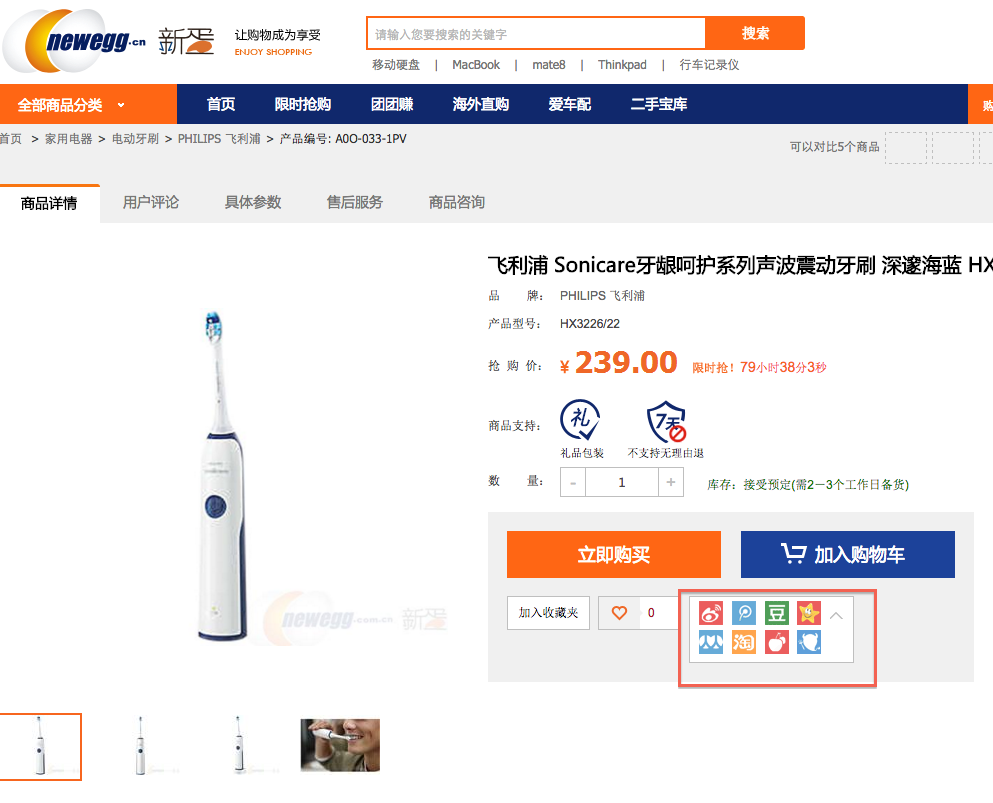


Plus, it’s just absurd to see Taobao is one of them.
Continue to read Part 2, including some good examples such as: Amazon, Mia and Sephora.
